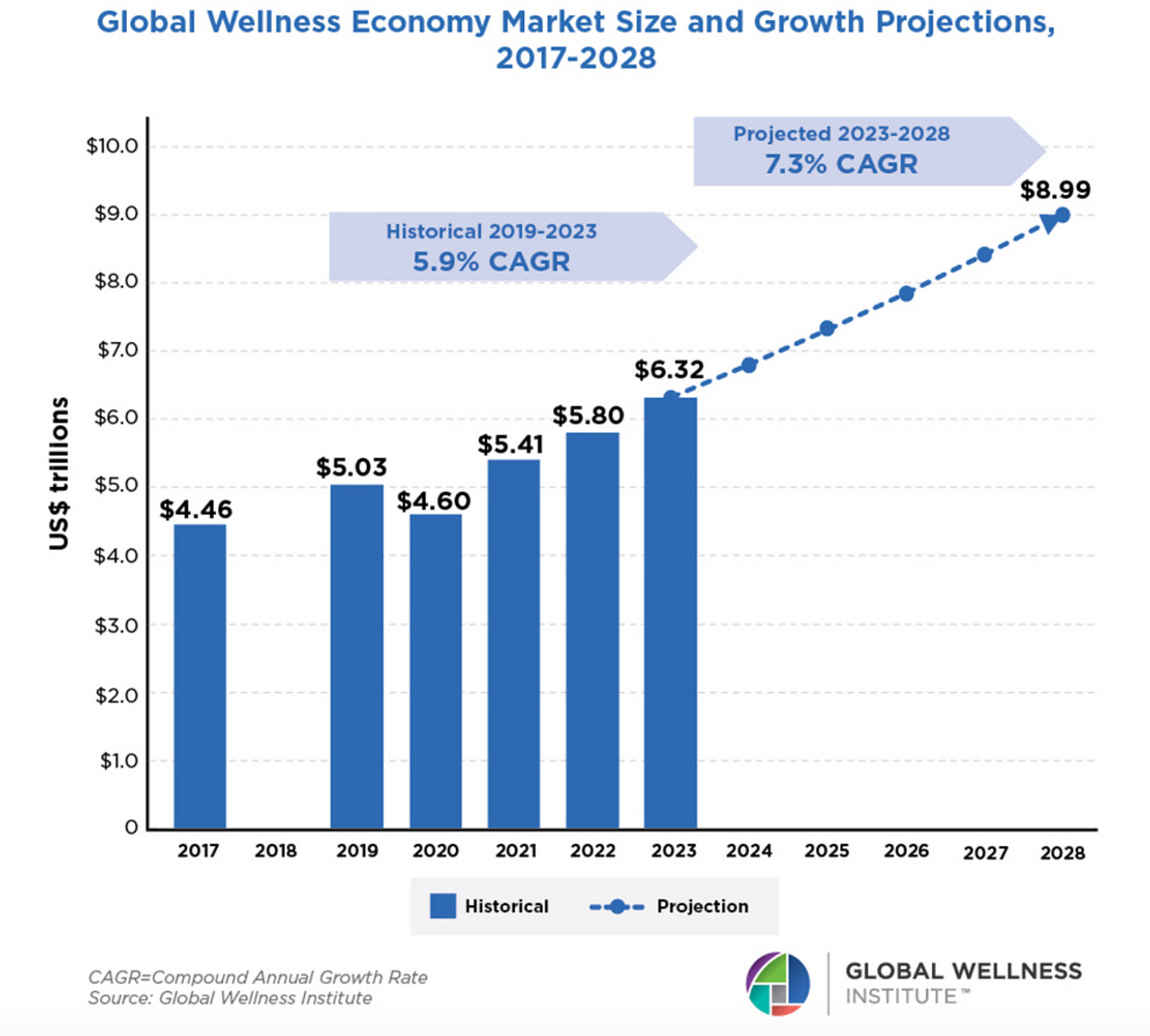What Capitalists Do Not Want Us to Know about Health & Wellness
What we seem to be lacking may not be essential to us
Health and wellness are trendy. Everyone nowadays, especially the younger generations such as Gen Z, facilitates the dialogue of health and wellness. On social media, some netizens question why health and wellness have become so fashionable and sexy nowadays.
Well, there is no question that discussing health and wellness can draw substantial traction in today’s landscape. Yet, does the topic of health and wellness gain popularity all of a sudden? Or is the topic always trendy, yet somehow its discussion is brought to the surface on the Internet?
Let’s dig deep and find that out.
The Hyper-active Market Dynamics of the Health & Wellness Industry
According to McKinsey’s Future of Wellness research, which surveyed over 5,000 consumers across the United Kingdom, the United States and China, Gen Zers and millennials are now purchasing more wellness products and services than their older generations. Gen Z is most interested in wellness spending that is focused on appearance and/or overall health. They also outspend older customers on mindfulness-related wellness products such as meditation classes, mindfulness apps and therapy sessions.
One possible reason to justify the trend of health and wellness among younger generations is due to the exposure and access to information about health and wellness. With the rapid growth of digitalisation and mass information, people who are active on the Internet regularly consume a flood of content about health and wellness. For example, from FitTok or IG reels, we are constantly exposed to the sharing of workouts, food plans and other fitness-related content.
According to the Global Wellness Institute, not only has the global wellness economy surged in recent years, such an economy is projected to grow more rapidly in the years to come. By 2028, the global wellness economy is forecast to hit US$8.99 trillion. This hints at how the market dynamics have progressed. On one hand, there has been an influx of content creators and influencers who are constantly driven to share fitness, health and wellness content. They are rewarded by the market in doing so, as FitTok shorts and IG reels that focus on such a niche often draw a substantial amount of traffic. This means, on the other hand, there are loads of online consumers who are hooked and obsessed with watching such content.
“What We Want” vs “What We Need”
The continual surge of the demand and supply within the health and wellness niche industry has prompted many of us to believe in the need to stay healthy, well and whole. However, what and how the market sells us do not necessarily imply that these things are essential to our wellness. There is a huge amount of diversity, choice and innovation in the wellness marketplace.
According to Ophelia Yeung and Katherine Johnston from the Global Wellness Institute, we do not have to spend a lot of money on wellness in order to “be well”. There are many activities and lifestyle choices that we can pursue to support our health and wellness which (almost) cost us nothing. These include basic, non-capitalised activities such as spending time with families and friends, or enjoying nature.
In short, we increasingly find health and wellness important owing to our constant exposure to such content and how the market wants us (as consumers) to pay and consume. In fact, while health and wellness are an integral part of our lives nowadays, we should stay critical in differentiating between what we want and what we need.
Final Thoughts
Health and wellness have always been valuable to humankind. That being said, however, driven by the rise of digitalisation and mass information, manufacturers, salespersons and content creators within the niche industry find golden opportunities to actively promote health and wellness— sometimes to an annoying extent. Our constant exposure to such content facilitates our collective dialogue on “better health” and “staying well”, while, simultaneously, buying into the perception that we are lacking something (be it products, courses or other services) from being whole and satisfied.
Ultimately, for a large part, this is how capitalism leads us to exaggerate, and crave, the need for more, more and even more in fitness, health and wellness. So we should ask ourselves:
Do we have enough in health and wellbeing? If not, what are we lacking? Are what we are lacking essential to us, or simply a delusion that the market sells us?
Thanks for reading my takes on health & wellness. If you would like to learn more about (mental) health, personal development and/or (online) education from me, please feel free to subscribe to my newsletter below. Also please feel free to browse my blog — Society & Growth — for more content at
https://jasonhungofficialblog.com/





You prob don't want to know either.